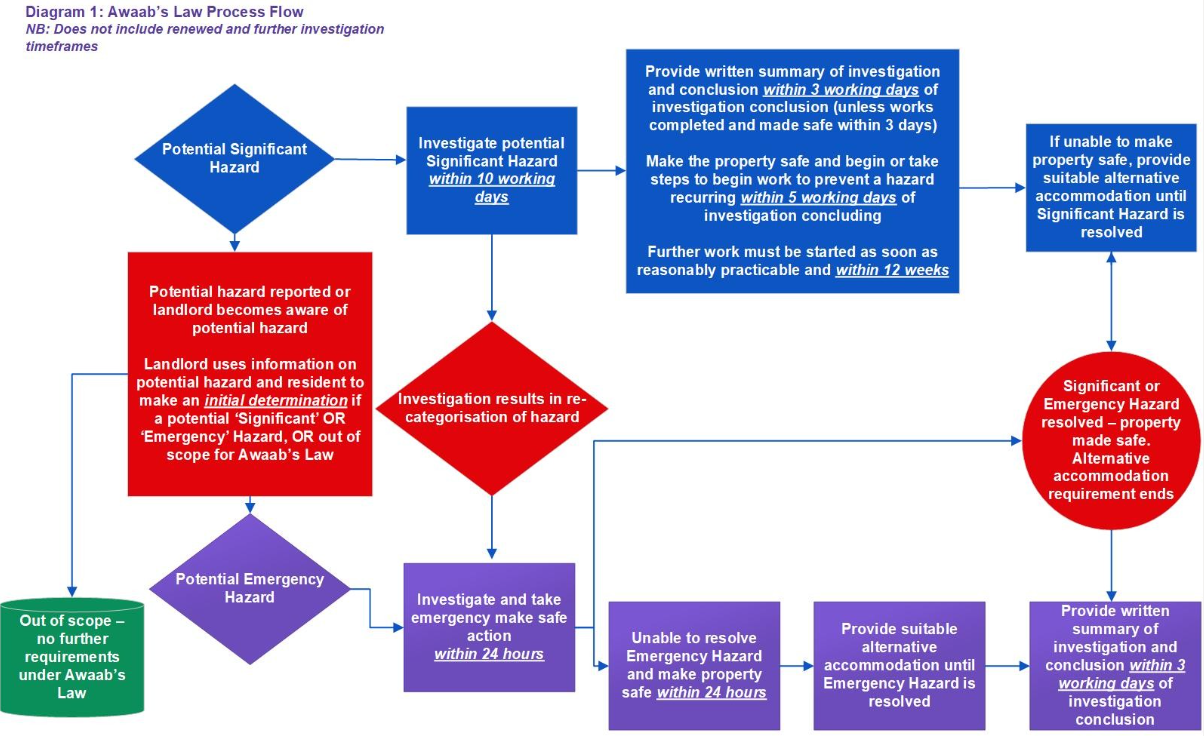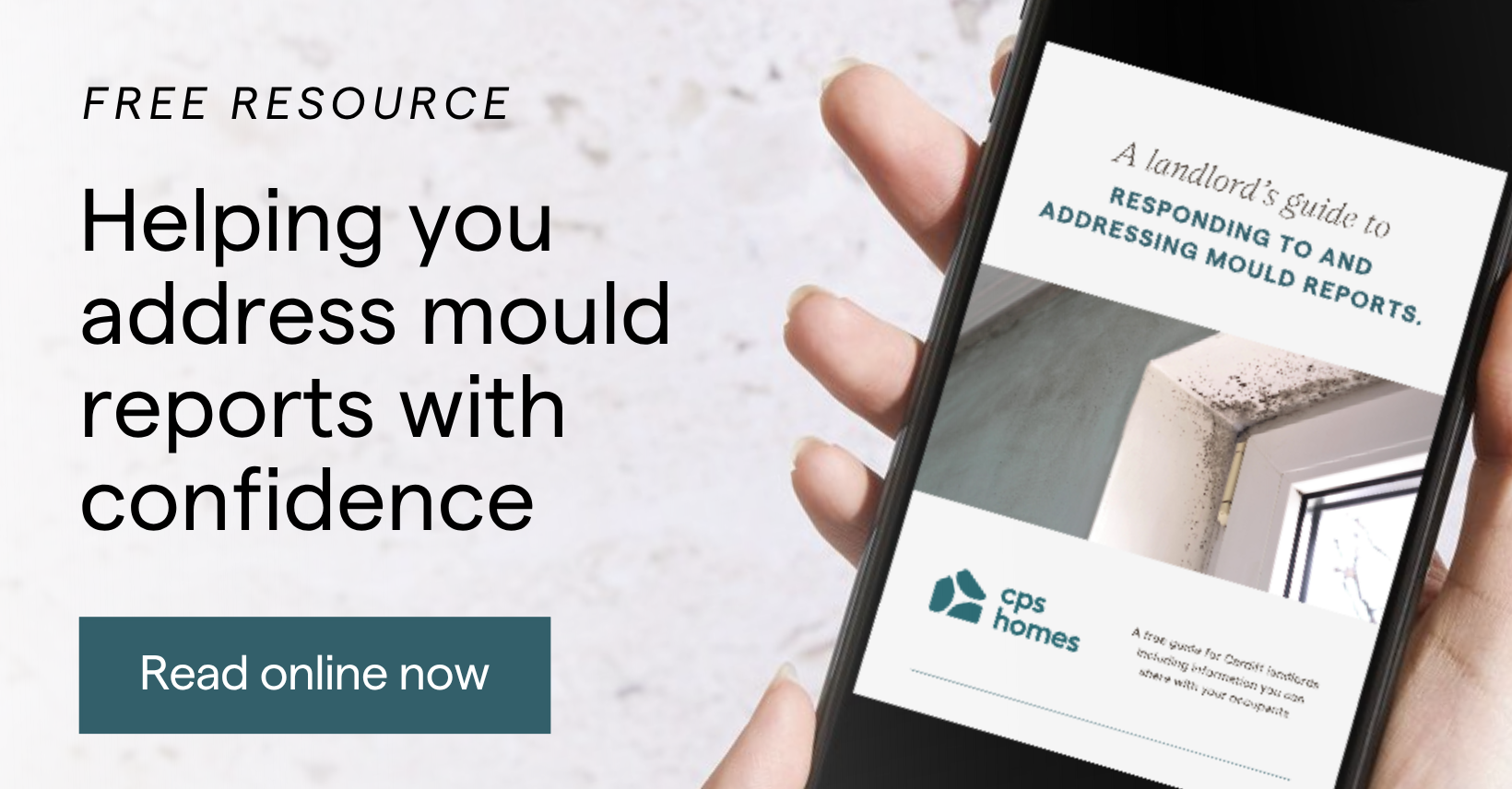
Awaab’s Law comes into force: Why Welsh private landlords should take note
Last week (27th October 2025), Awaab’s Law officially came into effect in the English social housing sector. Under the new rules, social landlords must address all emergency hazards and all damp and mould hazards that pose a significant risk of harm to tenants within strict, fixed timeframes.
At first glance, you might think this doesn’t concern you – after all, your portfolio sits in Wales, and you’re a private landlord, not a social one. But here’s why this is something you’ll want to pay close attention to.
What’s happening in England – and why it matters here in Wales
Awaab’s Law forms part of the Social Housing (Regulation) Act 2023, introduced in memory of two-year-old Awaab Ishak, who tragically died in 2020 due to prolonged exposure to mould in his home. We previously wrote about the circumstances surrounding Awaab’s death and why landlords should take note.
Through the Renters’ Rights Act (which received Royal Assent last week), the UK Government has committed to extending Awaab’s Law to England’s private rented sector. When that happens, it’s very likely the same (or similar) statutory timeframes that apply to socially rented properties will apply to private rented properties – and that could shape future housing standards across the UK.
It’s entirely possible we’ll see equivalent requirements introduced into Wales’ private rented sector in the future. In short: this isn’t just an English social housing issue – it could be a sign of what’s coming next.
A quick overview of what Awaab’s Law requires
From 27th October 2025, English social landlords must:
- Investigate any potential emergency hazards and, if confirmed, carry out the necessary safety work as soon as practicable – both within 24 hours of becoming aware of the hazard.
- Investigate significant damp and mould hazards within 10 working days, provide written findings to tenants within 3 working days of the investigation concluding, and undertake relevant safety work within 5 working days of that conclusion.
- Begin, or take steps to begin, any supplementary preventative work to stop a significant or emergency hazard from recurring within 5 working days of the investigation concluding. If that isn’t possible, work must start as soon as practicable and no later than 12 weeks afterwards, and be completed within a reasonable time period.
- Provide suitable alternative accommodation if safety work can’t be completed in time.
- Keep tenants updated and provide clear information on staying safe.
And this is just the beginning.
In 2026, the law will expand to include other hazards such as excess cold, heat, falls, fire, electrical issues, and structural collapse. In 2027, all remaining HHSRS hazards (with the exception of overcrowding) will fall under the same requirements.
UK Government have produced a simplified process flowchart to help (click to englarge):
What this means for you
For now, this law applies only to English social landlords, but we already know it will soon extend into their private rented sector too.
If Wales follows England’s lead, private landlords here could soon be working to statutory deadlines for mould and other hazards.
How CPS Homes is already helping occupants and landlords alike
Long before Awaab’s Law came into effect, we recognised the need for landlords to have a clear, defensible process for responding to reports of mould or damp. Our approach ensures that every report is handled swiftly, consistently, and with full documentation – protecting both occupants’ wellbeing and landlords’ legal position.
When a report of damp or mould comes in, our process begins immediately. We:
- Provide educational guidance to occupants on what causes condensation, how to prevent it, and how to treat minor mould patches safely and effectively. We also explain the difference between damp (caused by structural issues) and mould (typically a condensation issue), so tenants understand the nature of the problem and their role in preventing recurrence.
- Check that each property is equipped with the right ‘tools’ to allow proper ventilation and heating – such as functioning extractor fans, openable windows, trickle vents, suitably sized radiators, and tumble dryers or outdoor drying options. If anything isn’t working as it should, we liaise with our landlord client to arrange prompt repairs or replacements through trusted contractors.
- Carry out in-person inspections quickly to verify the issue, reinforce our advice in-person, and document living conditions through photographs and notes. This helps us identify whether the issue stems from lifestyle factors or a property fault and allows us to act accordingly.
- Record every step of our communication, advice, and follow-up actions. This ensures landlords have a clear paper trail demonstrating they’ve responded appropriately and responsibly – a key element of building a defensible position if a dispute arises.
Recent inspections have shown how this proactive approach works in practice. For example, we’ve helped tenants understand the impact of drying clothes indoors, shown them how to use trickle vents correctly, and arranged same-week repairs when extractor fans weren’t functioning. In every case, our combination of education, inspection, and prompt action has prevented issues from escalating – and given landlords clear evidence of their compliance and care.
By combining tenant education, timely maintenance, and thorough documentation, we’re already working to the kind of standards Awaab’s Law will soon demand elsewhere in the UK.
It’s all part of our commitment to keeping properties safe, occupiers informed, and landlords protected – no matter what new legislation comes next.
The information contained within this article was correct at the date of publishing and is not guaranteed to remain correct in the present day.




